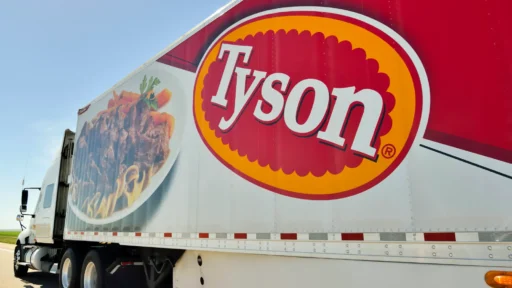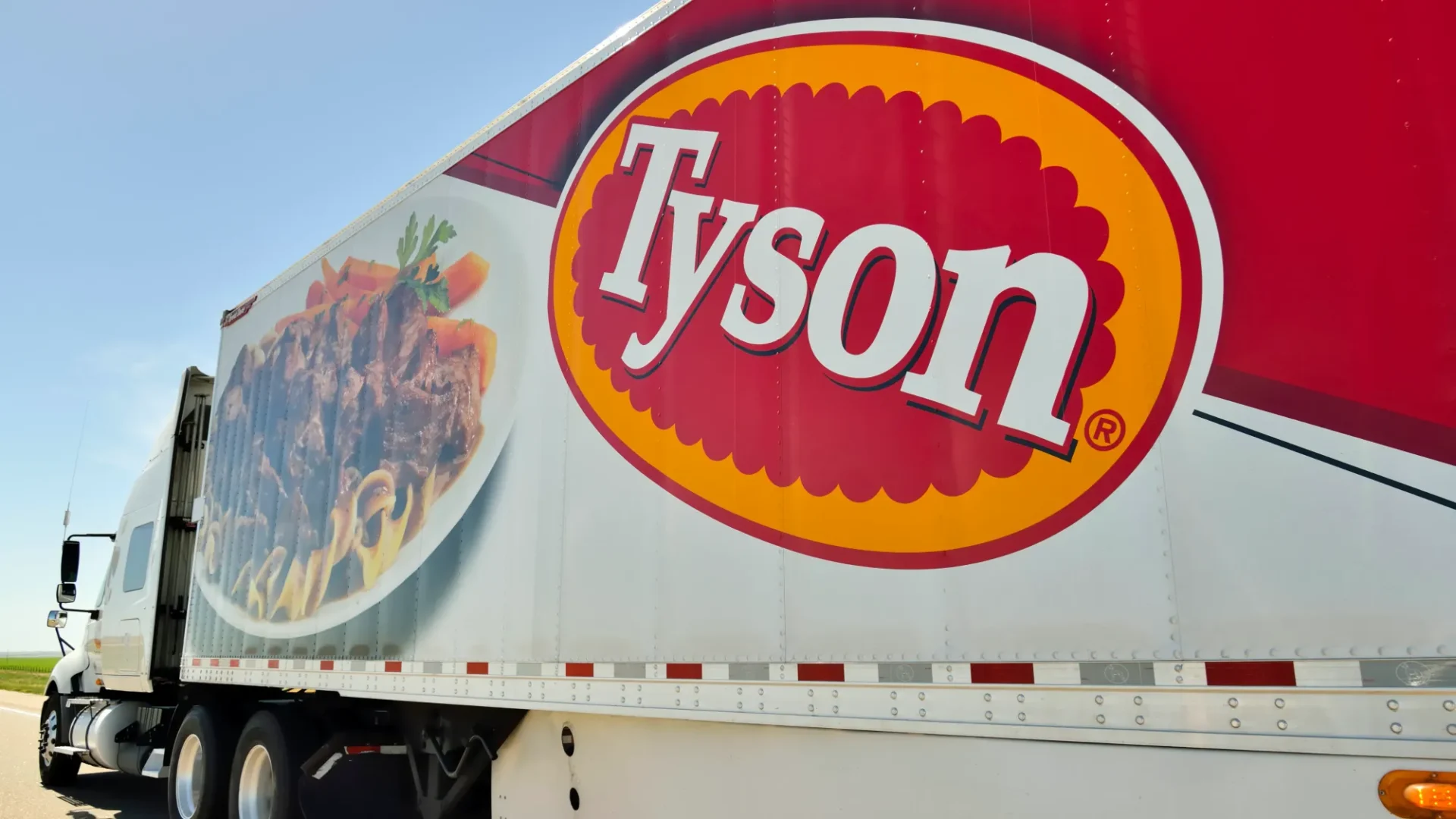You know how we always talk about AI being the future? Well, Tyson Foods just proved that the future is actually right now, and honestly, what they’ve done is kind of mind-blowing.
So picture this: you’re running a restaurant and you need to find the right chicken product for your menu. Normally, you’d go to Tyson’s website, type in some keywords, and pray you find what you’re looking for. But now? You can literally have a conversation with their AI assistant like you’re talking to your most knowledgeable supplier rep.
Here’s what makes this story so incredible. Tyson took their entire product catalog – we’re talking 600 recipes and 1,200 active products – and made it searchable through natural conversation. Instead of typing “chicken wings,” you can say something like “I need a protein that cooks fast for my busy lunch rush and doesn’t require much prep space.” The AI gets it. It understands what you actually need, not just what keywords you used.
Learn more about Tyson’s implementation in the official AWS case study, which provides detailed technical specifications and architecture insights.
The Numbers That’ll Make Your Head Spin
Let me tell you about the business impact, because this isn’t just some cool tech demo. Tyson is saving 15,000 hours of skilled labor annually at each facility. Think about that for a second. That’s like having 7.5 full-time employees worth of extra productivity just from AI automation.
But it gets better. They’re targeting $250 million in AI-driven savings across their operations. And get this – they just reported 48% growth in earnings per share and 24% sales increases. Now, not all of that is from AI, but their digital transformation is clearly paying off big time.
The really impressive part? They built and deployed this entire system in less than three months. Three months! Most companies take longer than that just to decide which vendor to use.
How They Actually Built This Thing
Okay, so you’re probably wondering how they actually pulled this off. The technical setup is pretty sophisticated, but let me break it down in a way that makes sense.
They’re using Amazon’s cloud services as the foundation. The brain of the operation is Claude 3.5 Sonnet from Anthropic, which is this incredibly smart AI model that can hold complex conversations and actually understand context. It’s not just matching keywords – it’s understanding what you mean.
Here’s the clever part: they’ve created what’s called a “semantic search” system. Instead of just looking for exact word matches, it understands the meaning behind what you’re saying. So when someone searches for “pulled chicken,” it knows they probably want the same thing as “shredded chicken.” It’s like having someone who speaks fluent restaurant-owner translate between you and the product catalog.
The whole system runs on Amazon’s cloud infrastructure, which means it can handle massive traffic spikes without breaking a sweat. They’ve got load balancers, security systems, and all the enterprise-grade stuff you’d expect from a company that processes 40 million chickens per week. For more details on AWS’s AI services, check out their comprehensive documentation on Amazon Bedrock and semantic search capabilities.
Why This Changes Everything for the Food Industry
Here’s what’s fascinating about this move. While other food companies are still figuring out basic AI applications, Tyson just leapfrogged everyone by going straight to customer-facing conversational AI.
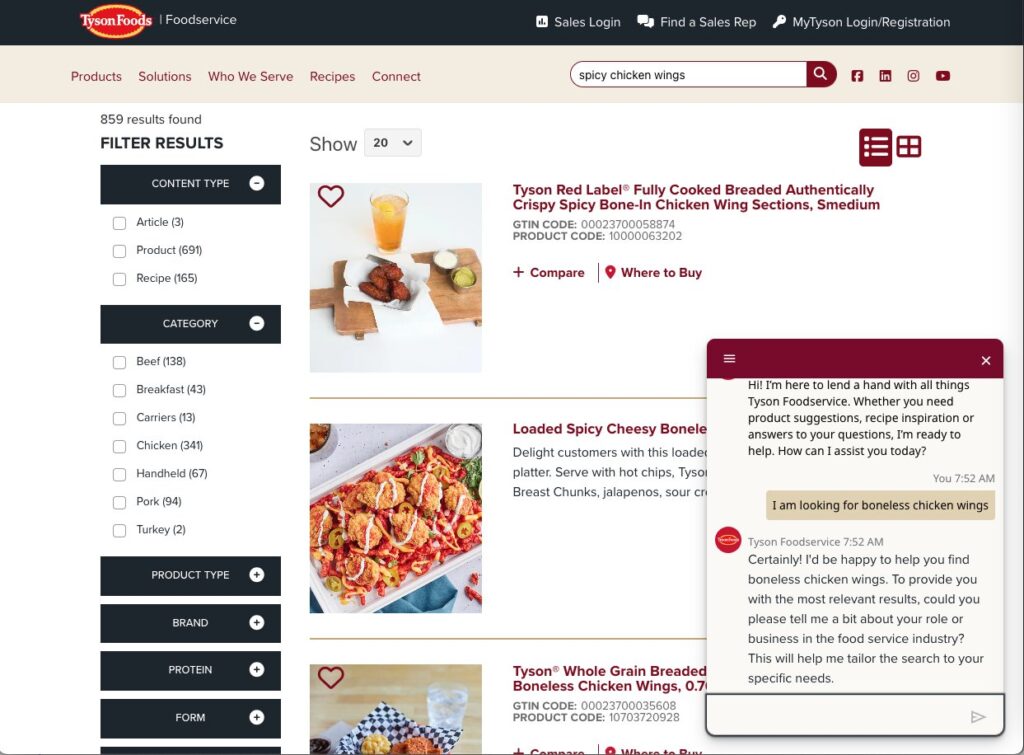
Let’s look at what the competition is doing. Nestlé has some impressive AI for product development – they can create new products in 3 weeks instead of 3 months. Unilever is using AI for recipe testing and supply chain optimization. But most of these applications are behind the scenes.
Tyson said, “Let’s put AI directly in front of our customers and make their lives easier.” That’s bold. And smart.
The food AI market is exploding right now. We’re talking about growth from $8.45 billion in 2023 to potentially $84.75 billion by 2030. Companies that get in early and do it right are going to have massive advantages.
Want to understand the broader implications of AI adoption in traditional industries? Our analysis of digital transformation trends explores how companies like Tyson are leading the charge.
For current market data and projections, the Grand View Research report on AI in Food & Beverages provides comprehensive market analysis and growth forecasts.
The Real-World Impact on Customers
This is where it gets really interesting. Tyson serves over 1 million foodservice operators through their website. These are busy restaurant owners, cafeteria managers, catering companies – people who don’t have time to dig through complex product catalogs.
Before this AI assistant, if you were looking for a specific type of chicken product, you’d have to know exactly what to search for. If you didn’t use the right industry terminology, good luck finding what you need.
Now, you can literally describe your situation: “I run a fast-casual restaurant and need a chicken product that my line cooks can prepare quickly during lunch rush.” The AI understands your business context and recommends products that actually fit your operational needs.
The system is available 24/7, which is huge for restaurant operators who often do their research and ordering outside normal business hours. And it’s learning from every conversation, getting smarter about what customers actually need.
What the Experts Are Saying
Industry analysts are pretty excited about this kind of implementation. Gartner predicts that by 2029, AI agents will autonomously handle 80% of common customer service issues. McKinsey research shows that companies using conversational AI well can see 30-45% improvements in customer operations productivity.
But here’s what the experts also warn about: implementation is everything. You can’t just bolt AI onto your existing systems and expect magic to happen. You need clean data, proper architecture, and a clear understanding of what problem you’re actually trying to solve.
Tyson nailed this because they focused on a real customer pain point – product discovery – and built a solution specifically for their industry’s needs. They didn’t try to build a generic chatbot. They built a knowledgeable assistant that speaks the language of foodservice.
The Technical Challenges They Had to Solve
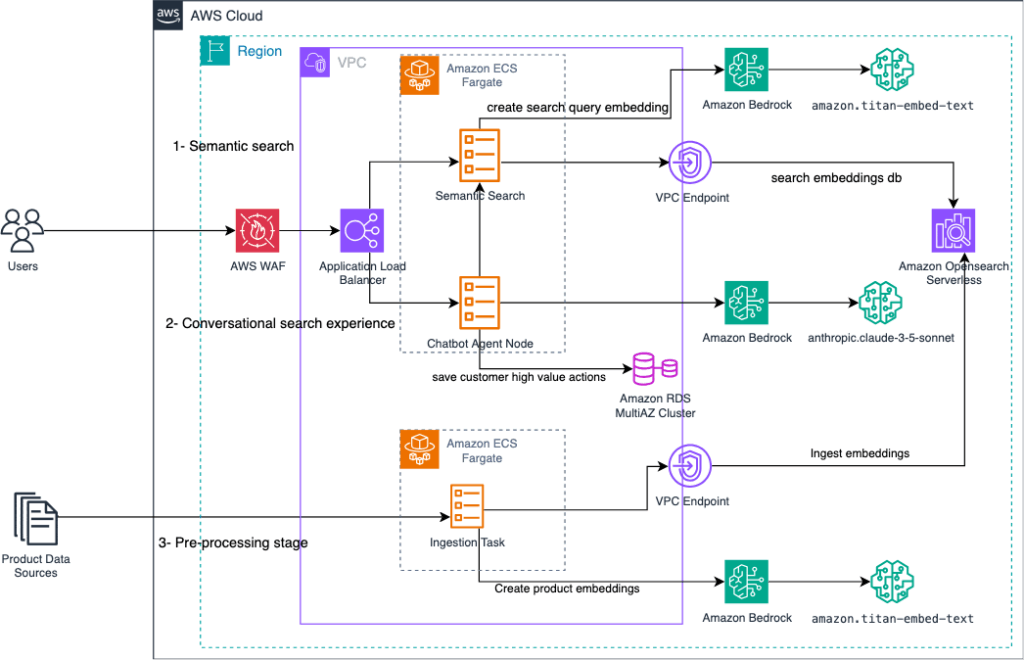
Building this system wasn’t just about plugging in some AI and calling it done. They had some serious technical challenges to work through.
The biggest one was terminology. Customers and the product catalog often use different words for the same thing. A customer might search for “buffalo chicken” while the catalog lists it as “hot chicken strips.” Traditional search would fail completely.
Their solution was semantic understanding – the AI learns that these different terms often mean the same thing in context. It’s like having a translator who understands both customer language and industry terminology.
They also had to handle the complexity of 1,200 different products, each with different preparation methods, cooking times, and applications. The AI needed to understand not just what products exist, but which ones make sense for different business situations.
Scale was another challenge. Serving over a million potential users means the system needs to work reliably under heavy load. They solved this with Amazon’s serverless architecture that automatically scales up and down based on demand.
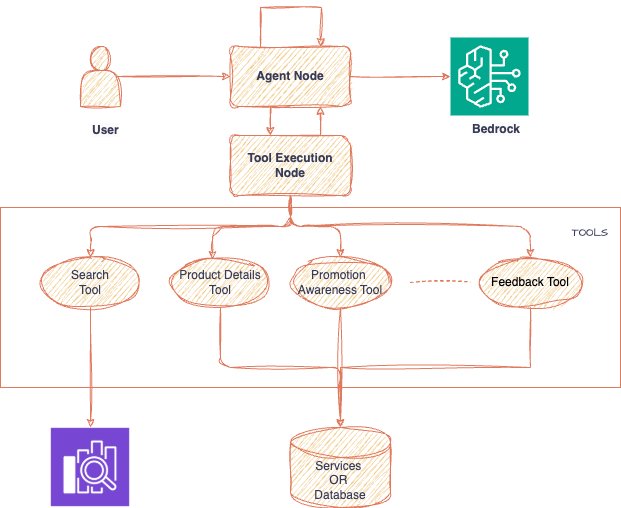
Why This Matters for Other Industries
Here’s the thing that gets me excited about this story: it’s not just about food. What Tyson proved is that conversational AI is ready for prime time in B2B applications.
Think about any industry with complex product catalogs where customers need guidance. Industrial supplies, construction materials, automotive parts, medical equipment – the applications are endless.
Check out our comprehensive guide on AI applications across different industries to see how these concepts apply beyond food service.
The key insight from Tyson’s approach is that the AI doesn’t need to be perfect at everything. It just needs to be really good at solving one specific problem for a specific audience. In their case, helping foodservice operators find the right products quickly and easily.
What Comes Next
Looking ahead, this is just the beginning. Voice commerce is exploding – we’re talking about going from $4.6 billion in 2021 to $82 billion by 2025. Imagine being able to verbally describe what you need while you’re walking through your restaurant kitchen and having the AI immediately understand and make recommendations.
For detailed insights into voice commerce trends and statistics, see Sevenatoms’ comprehensive analysis of voice search trends for 2025.
The next generation of customers – Gen Z restaurant owners and managers – are already expecting this kind of intelligent interaction. They grew up with Siri and Alexa. Basic keyword search feels primitive to them.
Our article on designing for different generations explores how user expectations vary across age groups and what this means for product design.
Companies that don’t adapt are going to find themselves at a serious disadvantage. It’s not about having the fanciest technology – it’s about making your customers’ lives easier and more productive.
The Bottom Line for Business Leaders
If you’re running a company with complex products or services, pay attention to what Tyson just did. They didn’t wait for perfect technology or worry about every possible edge case. They identified a real customer problem, partnered with experts who knew how to solve it, and shipped a working solution in three months.
The results speak for themselves: happier customers, operational efficiency, and measurable business growth.
The window for first-mover advantage in conversational AI is still open, but it’s closing fast. Companies like Tyson are proving that this technology is ready for real business applications right now.
The question isn’t whether AI will transform customer experience in your industry. The question is whether you’ll be leading that transformation or scrambling to catch up.
Ready to start your own AI transformation? Our step-by-step implementation guide breaks down exactly how to approach AI adoption in your organization.
And honestly? After seeing what Tyson accomplished, I’m betting on the companies that start experimenting with this technology today, not the ones waiting for someone else to prove it works.
Additional Resources:

